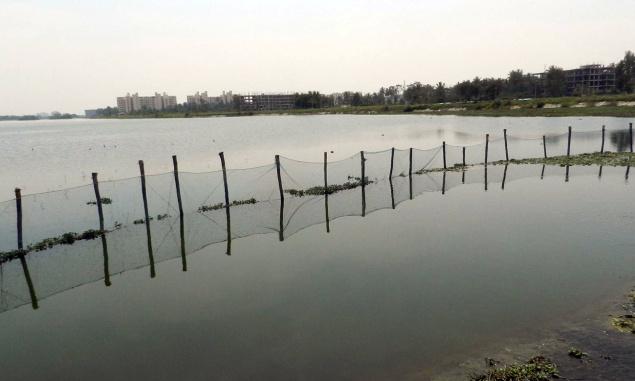 Bangalore: The imagination of water in a city should not be limited to its delivery in pipes alone. A good water management plan would mean and include the many roles of water such as the spiritual, the cultural, the ecological and the recreational.
Bangalore: The imagination of water in a city should not be limited to its delivery in pipes alone. A good water management plan would mean and include the many roles of water such as the spiritual, the cultural, the ecological and the recreational.
In the hierarchy of the development of water infrastructure in a city there is first the arrival of piped water supply. Drainage and sewerage follow after some time. The city then starts to understand and manage its surface water such as lakes, rivers and canals. Attention then usually shifts to groundwater management. If all this is done and fountains dot the landscape, where rivers and lakes become clean and spots of recreation and where all waste-water streams are managed, the city starts educating its citizens, especially its young ones, on water and spreading water literacy. This city can be said to have become water sensitive. Singapore comes to mind as one such city. Stockholm and Oslo also manage their waters accordingly and celebrate it. Seoul is getting there or nearly there. We in India are on the painful ladder and it will take time but the vision has to stay firm. Of course in a water-sensitive city, all citizens will have equal access to the resource and there will be no deprivation and appropriation of the commons.
In Coimbatore, through a citizen-government partnership, the Big Tank was de-silted and made ready to receive rainwater which it has collected in plenty. In Dindigul, de-silting has begun of the old tank. In Karnataka, Tiptur has refurbished and improved a large tank; so have Sira and Tumkur.
Water ecosystem
In Bangalore, the Bangalore Development Authority has invested over Rs. 110 crore in improving over 14 tanks. Of these tanks Jakkur in the northern part of the city seems to offer a potential comprehensive role of creating a water ecosystem which fits the role of what a water body can do in a city – as they say, to function as its kidney. The tank itself was a beautiful irrigation tank with a command area which grew paddy. As the city has caught up, the role of the tank has now changed.
There is a wetland on the upstream-end which receives water from a waste-water treatment plant. The wetland further purifies the waste-water. The tank itself, with a water spread of 50 hectares, is full and harbours lots of fish. Birds nest and a virtual array of them can be seen during the year.
The tank has recharged groundwater in the surrounding areas and some of the remaining water heritage of the city — the traditional wells — are full to the brim. Boys learn to swim in one of them. Another well is used for large-scale irrigation of coconut and banana plants. The tank has a place for immersion of Ganesha idols in one place. Storm-water inlets to bring in rain when it occurs have well-designed silt traps to allow only water to come in and not debris and solid waste.
The tank ecosystem fulfills many a function, from the ecological, to the cultural and spiritual, from the educational to that of recharge and many more.
This is truly a microcosm of what is called integrated urban water management in practice. Here we see the transformation of waste-water through a physical process of treatment followed by a biological process to drinking water.
Water in a city is much beyond what flows in pipes. If designed and managed well it can enhance and provide for the needs of nature and man in myriad forms. The Jakkur lake should be managed well so that it becomes a living lab for our citizens to see and learn how urban waters can be managed.
This experiment can then be repeated in most other tanks of the city and also in other cities. Bangalore has been a pioneer in many ways to urban water management. Can it take a lead in this one too? In that would lie water wisdom.
